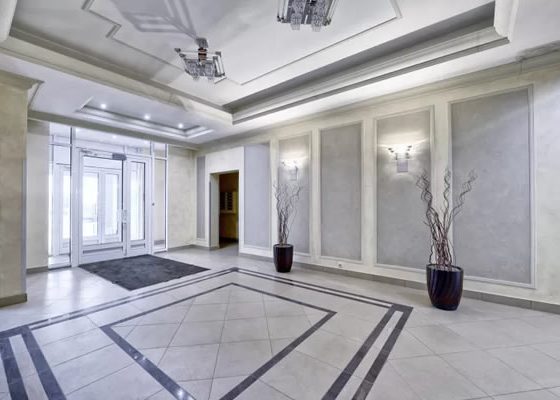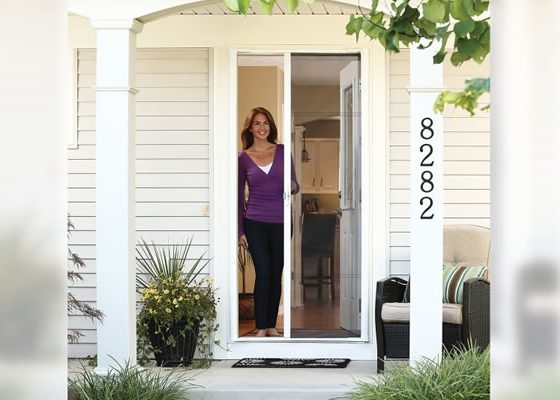Learning how to design a music room will help you get the most out of the room while keeping peace with your neighbors and other household members. Decide how the room will be used — whether for practices, performances, or recordings — and create your design from there.
Music Room Location
If you’re planning to build a home with a music room, take advantage and create your ideal location. However, most people are challenged to carve out a music room in an existing space. The purpose of the room will help you decide where to locate your music room.
Once you’ve chosen the room, you’ll need to determine whether any major remodeling needs to be done, such as adding or removing walls, painting or replacing the floor. You will also need to decide if the room should be soundproofed and how much soundproofing is needed, before you go on to place furniture, choose additional lighting, and decorate.
Practice or Performance Room
If you need space for an individual or several people to practice use a room in the back of the home away from any noise from the street. Choose a room that isn’t in the middle of household activity to lessen the noise level and potential for interruptions.
Sound Studio or Band Practice Room
A basement is a good location for a recording studio or band to practice since it allows better control over the sound from a below ground room. A windowless studio may be ideal for you. A walk-out basement may also have windows, but you can adjust your design to lessen possible reflective noise.
Acoustic and Sound Solutions
Music is all about the sound so you’ll need to spend some time assessing the level of sound transfer in and out of the room and where remedies are needed. You want to block sound from entering and leaving the room and to ensure that the acoustics inside the room are the best possible. There are a few things you can do to reduce noise with sound absorption to improve your music room acoustics.
Sound Absorption
Sound absorption techniques enhance the acoustics of a room through sound clarity. For the average family music room, use basic furnishings to absorb some sounds that normally echo off hard surfaces. Hard surfaces include tile, concrete, and hardwood flooring, along with glass windows and doors.
- Area rugs with pads placed over tile or hardwood floors help muffle sounds. Wool fibers have a higher rate of sound absorption than synthetic yarns.
- Honey-combed shades and insulated curtains reduce sound reflecting off glass.
- Plants aren’t just for aesthetics; they also make great sound absorbers.
- Cover long walls with draperies.
- Acoustic ceiling tile, especially in a basement, is an excellent choice.
- Choose upholstered sofas and chairs instead of wood styles such as Mission.
Sound Diffusion in Corners
Balance is the key to achieving your goal. Be careful not to create too much sound absorption. This will result in a muffled effect known as acoustically dead. Sound absorption isn’t always the best solution for reflective sound generated by glass and other hard surfaces. Sometimes, it’s better to use sound diffusion. Corners are notorious for creating reflective sound.
If you have installed acoustic tiles, foam pad with a carpet or rug and draperies but still have acoustical issues, your problem may be the corners in your room. Corners create what’s known as the “megaphone effect” by bouncing sound between the two walls. Referred to as “standing waves,” this acoustical problem produces a “fluttering” sound.
- Use a bookcase or bookshelves in a corner. Make sure the books are of varying sizes and heights.
- Fabric room dividers/screens placed in a corner to make a vignette with a floor plant also works.
- Add wallpaper to one or both walls.
- Place an upholstered chair, table, lamp with a fabric shade, and a fabric wall hanging in the corner.
Soundproofing for Recording Studios
Soundproofing absorbs sound and the more you can contain the music inside the room, the happier everyone will be; it will also keep the sound of traffic, lawnmowers, and loud televisions out when recording music.
- Soundproofing products, such as isoTRAX, can be applied to walls and ceilings to further reduce sound transfer.
- Use acoustic panels and acoustic foam on the walls to counter echo and background noise.
- For an upstairs studio, install a vinyl barrier underneath the carpet padding or under floating hardwood floors.
- Add insulated curtains to further block the sounds.
Importance of Lighting Choices
Lighting serves two purposes in a music room. One is purely functional by providing enough light to see, especially sheet music. The second is for ambience. This is especially necessary for a performance room or recording studio. The psychological effect of lighting impacts the musicians’ performances. Some rooms will have natural light and artificial, whereas most recording studios rely on artificial lighting.
General Lighting Requirements
Some general lighting needs for both types of music rooms include:
- Main overhead lighting, such as a chandelier or other lighting fixtures
- Recessed ceiling lights on a dimmer switch to control room ambience
- Overhead direct lighting if musicians sit in the same place each time they practice
- Adjustable floor lamps
- Task lighting, such as LED music lights that clip onto music stands (some have tap-on power buttons)
Stage lighting is helpful when musicians are rehearsing for a performance.
Studio and Stage Lighting
In addition to general lighting, a recording studio benefits by various lighting choices to assist in setting the mood with ambient lighting systems. Some of these could also be used for stage lighting requirements.
Possible lighting needs include:
- Spotlights
- Projectors
- LED lighting systems for the floor and ceiling
- Lighting system that can change the colors of the lights
Furniture Placement and Décor
The type of furniture you need for a music room depends on how many people will be using it. The style of furniture you select should be in keeping with the look you wish to maintain in the music room. Is your overall style modern, traditional, or formal? Use furniture that will help create the desired effect for a comfortable yet inspiring setting.
Practice Room
A room used just for practicing will require seating for the musician(s) and possibly additional seating.
- Musician chairs: A musician chair needs features for comfort, including an adjustable foot rest, cushioned seat and backrest and height adjustment.
- Additional seating: Include a couple of comfortable chairs or a lounger for listening to music, especially performance playback.
Practice and Performance Room
A music room that serves the dual purpose of practice and performance should accommodate both the musicians and guests comfortably.
Stage
You can build a step-up stage or designate a section of the room where musicians’ chairs are set. This can be placed on the side wall or, depending on acoustics, at the end or corner of the room. Add side and back wall draperies and lighting. The stage design should reflect the musicians and their music style.
Lounge Sitting Area
Locate the lounge sitting area directly across from the stage so everyone can see the performance.
- Use upholstered furniture, such as a sofa or love seat, and a few comfortable chairs.
- Add a few pouffs or upholstered ottomans for additional seating when needed.
- Be sure to include end tables to hold drinks.
- Add table lamps for soft ambient lighting or mini-crystal chandeliers above end table for a glitzy effect.
- Include a few plants of varying heights in your design. Use tall floor plants in corners and at the room entrance and a smaller one on a coffee table.
Club Design
- Use two-chair/table sets, placing the sets throughout the room as desired.
- Place battery-operated small lamps or votive candles on each table.
Theater Seating
- Use chairs with upholstered seats or utility folding chairs with thick cushions.
- Set the chairs in horizontal rows, allowing for a center or side aisle.
Décor and Accessories
Once you have your layout and furniture selected, it’s time to add accessories.
- Place musical instruments on stands or in a wall display and display a first pair of drumsticks framed in a shadowbox.
- Framed and matted posters of favorite musical performers, famous music halls, and even sheets of music are possible wall decorations.
- Dress a mannequin with attire worn at performances; it could be the musician’s own clothing or attire replicating a famed singer’s wardrobe.
- Old vinyl records make a great display on shelving or along the walls.
- Highlight awards and achivements by framing newspaper clippings, adding shelves for trophies, and hanging personal photos from performances.
- Novelty lighting, such as lava lamps, strings of lights, and neon signs, can be fun additions.
Two Music Room Design Examples
Modify colors, accessories, and even furniture styles as you desire.
Family Music Room
This is a den-sized music room. Seating for guests or family relaxing time features a modern chair, round table with a lamp, and an L-shaped sectional with a modern floor lamp and coffee table nearby. A crystal chandelier is centered in the room.
- A grand piano and piano stool take advantage of the natural light pouring in through the window.
- The wall opposite the seating are contains a fireplace flanked by bookcases.
- Each bookcase has a lamp on the far ends.
- The left wall displays three guitars on wall racks.
- In front of the display is a pair of musician stools.
- Each stool is accompanied by a floor guitar rack holding a guitar and a floor column amplifier.
- To the side of this grouping are two straight-back chairs with upholstered seats for additional musicians.
- Several plants are placed in the room.
- The perimeter of the ceiling features recessed lighting on a dimmer switch.
- Heavy draperies adorn the windows and feature fabric roll shades.
The floor can be carpeted or hardwood with a large round or rectangular area rug. The walls can be wallpapered or painted. You can further decorate with various framed artwork, photos of performances/recitals, and music degrees. Add shelving to display musical competition awards.
Performance Music Room
This room features a built-up stage. The black squares represent large amplifiers and the red rectangles are speakers. Track lighting is indicated over the front of the stage.
- The stage and rest of the room are carpeted.
- Two sofas form an L-shaped seating area with a swivel chair.
- The four black squares are leather ottomans that can be moved about the room to provide addition seating. When not in use, they are clustered for a coffee table.
- Table lamps rest on the two round and one square end tables.
- Recessed ceiling lights on a dimmer switch can be adjusted for ambiance.
- There is no additional overhead lighting.
- Wallpaper covers the wall and various artwork decorates the wall opposite the stage.
- The wall opposite the door features photos of the band at various performances.
Stage
- The stage can be set with other equipment, instruments, microphones and stage lighting.
- At the back of the stage, indicated with a broken red line, are shiny stage curtains that completely cover the back wall.
You can add additional touches to the décor according to taste. The stage can be decorated differently from the rest of the room and glamourized as much or as little you desire.
Make It Personal
Self-expression should be part of any music room design. Make sure that the type of décor you choose for a home music room reflects the musician’s personality and creative artistic style.














